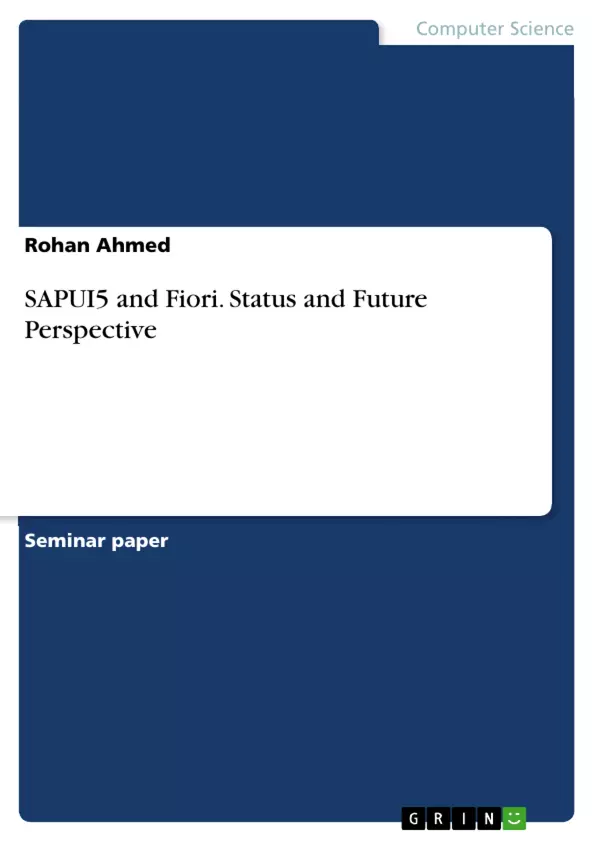Today almost every software and websites has a mobile compatible version and everyone can check anything on his mobile or tablet. This wasn’t the case 7-8 years ago. For SAP, Graphical User Interface as known as GUI was very powerful at the time when SAP launched its ERP software. With time, many other software exists with the fleet of HTML5 based powerful and more appealing modern UI-technology.
For this, the old GUI was not able to stand with it. As everyone knows, today are smartphones and tablets more powerful than pc’s. So, it was very important for SAP to find a solution and its was SAP Fiori – “One UX for all SAP Products”. Fiori is based on a framework known as SAPUI5 which is built on top of HTML5 and is compatible with any device and any screen size. The first announcement from SAP about Fiori was in May 2013 with the first release of 25 transactional Fiori apps for the most common business functions, such as self-services tasks which known as ESS/MSS.
Today, there are more than 1140 true Fiori apps available in Fiori library. The number of apps can partially supplement the previous GUI transactions. SAP offers three types of Fiori apps with different database requirements. A distinction is made between Transactional apps, Analytical apps and factsheets. Only Transactional apps can run on any database that supports SAP ERP. The other 2 types require SAP HANA as database. Since 2013, Fiori has made great progress and will continue in the coming years.
Table of Contents
- Introduction
- Problem Statement
- Goal
- Structure of seminar thesis
- Fundamentals and basic Terms
- SAP GUI
- SAP Fiori
- SAPUI5
- Open UI5
- Web Dynpro ABAP
- Methodology for the literature work
- Literature references
- Filters
- Search terms
- Result for the literature search
- Results
- Fiori apps in the present and in the future
Objectives and Key Themes
This seminar thesis examines the status and future perspective of SAP UI5 and Fiori, analyzing the literature and exploring the current and future developments of this SAP technology.
- The evolution of SAP's user interface technology from SAP GUI to Fiori
- The role of SAPUI5 as the framework for Fiori development
- The future of Fiori apps and its impact on traditional SAP GUI transactions
- The key features and benefits of Fiori, including its user experience, functionality, and role-based approach
- A comparison of Fiori with other SAP UI technologies, particularly WebDynpro ABAP
Chapter Summaries
The introduction presents the thesis's objective, which is to analyze the current state and future outlook of SAP UI5 and Fiori. It also outlines the problem statement, highlighting the limitations of the traditional SAP GUI and the need for a modern, intuitive user interface.
The "Fundamentals and basic Terms" chapter provides a comprehensive overview of key terms and concepts related to SAP UI5 and Fiori, including definitions of SAP GUI, SAP Fiori, SAPUI5, OpenUI5, and WebDynpro ABAP.
The "Methodology for the literature work" chapter details the methods used to conduct the literature review. It outlines the databases used, the filters applied, and the search terms employed to identify relevant research.
The "Results" chapter focuses on Fiori apps in the present and their projected future. It provides insights into the initial release of Fiori in 2013 and its subsequent growth, including statistics on the number of Fiori apps available in the Fiori library.
Keywords
This seminar thesis focuses on SAP UI5 and Fiori, exploring their status and future perspectives. Key themes include SAP user interface technologies, modern user experience, mobile-friendly applications, SAP GUI evolution, SAPUI5 framework, Fiori app development, role-based access, and the comparison between Fiori and other UI technologies like WebDynpro ABAP.
- Quote paper
- Rohan Ahmed (Author), 2017, SAPUI5 and Fiori. Status and Future Perspective, Munich, GRIN Verlag, https://www.hausarbeiten.de/document/426830


